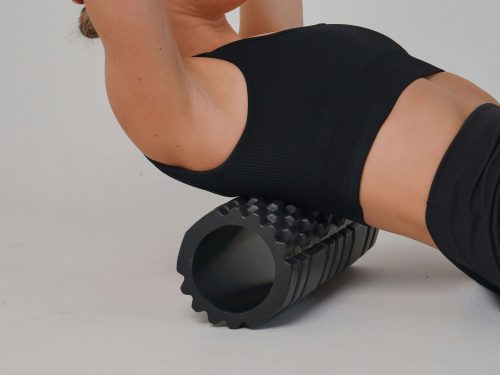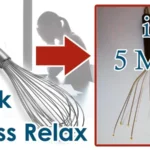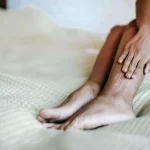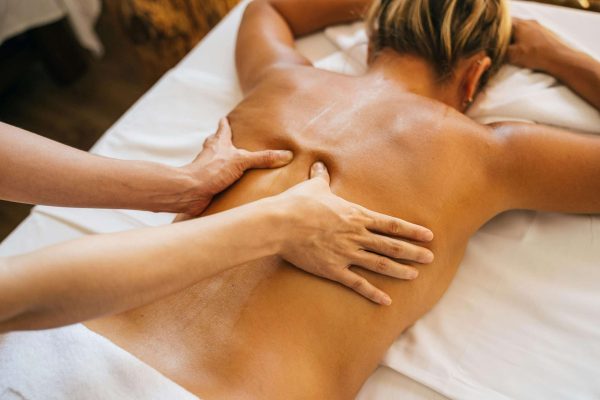Struggling with back pain or tight muscles? Learning how to massage your own back can be a game-changer for daily relief. Whether you’re dealing with stress, poor posture, or long hours at a desk, self-massage is a simple, cost-effective way to ease tension—no expensive therapist required.
In this guide, you’ll discover how to massage your own back at home using practical, step-by-step techniques. We’ll cover hand-based methods, wall-assisted stretches, and helpful tools you can use to target those hard-to-reach areas. Plus, you’ll learn the key benefits of self-massage and how to do it safely to avoid strain or injury.
Let’s dive into the best ways to give your back the attention it deserves—right from the comfort of your home.
Table of Contents
Benefits of Self Back Massage
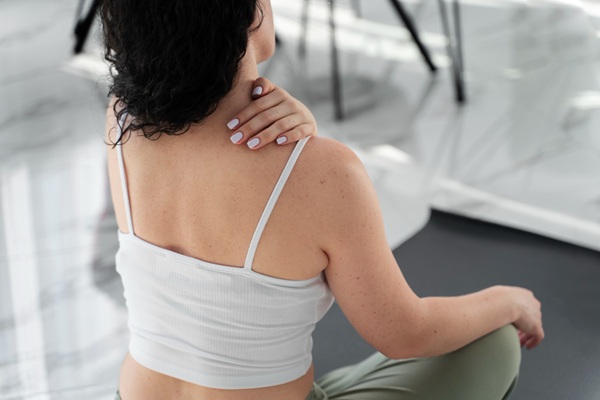
- Relaxation: Self-massage can be an effective tool to relax the body and reduce stress.
- Pain relief: Massage can help reduce muscle tightness and pain, especially in the back.
- Improved circulation: Self-massage can help improve circulation, which may help reduce inflammation and improve overall health.
- Reduced anxiety: Self-massage can help reduce anxiety and help you feel more relaxed and in control.
- Better sleep: Self-massage can help reduce stress and tension and improve quality of sleep.
- Improved flexibility: Massage can help loosen tight muscles, improve range of motion, and improve posture.
Self-massage is an effective way to take care of your body and health. By following simple techniques on how to massage your body yourself, you can enjoy the many benefits of self-massage. From improved circulation and reduced anxiety to better sleep and improved flexibility, self-massage is an excellent way to relax and take care of yourself.
🛠️ Preparation for Self Back Massage

Find a Quiet, Comfortable Space
Choose a calm spot where you can sit, stand, or lie down without interruptions. Make sure you have enough room to move freely.
Wear Loose, Comfortable Clothing
Avoid anything tight or restrictive. Soft, breathable clothes will help you move with ease and stay relaxed throughout the massage.
Gather Your Tools
Depending on the technique, you might need a massage ball, foam roller, massage gun, or oil. A towel and pillow can add extra comfort and support.
With a little setup, self-massage becomes a powerful way to ease tension and unwind—right from the comfort of home.
📚 7 DIY Techniques: How to Massage Your Own Back at Home
If you’re wondering how to massage your own back, these seven DIY techniques will help you relieve tension and feel better—no therapist required.
👐 1. The Tennis Ball Roll (Wall or Floor Method)
This is one of the easiest and most effective techniques.
How to do it:
Place a tennis ball between your back and a wall, or lie on the floor with the ball under your back. Gently lean or shift your weight to roll the ball along tight or sore muscles. Focus on knots in your upper back, between the shoulder blades, and near the spine. Roll slowly for 30–60 seconds per spot, then switch sides.
Best for: Trigger points, muscle knots, and upper back tension
Tip: Avoid direct pressure on the spine or bones.
🤖 2. Massage Gun for Upper Back Relief
A compact massage gun can easily target hard-to-reach spots on your upper and lower back.
How to do it:
Hold the massage gun in one hand and gently position it against sore or tight areas like the trapezius, shoulder blades, or lower back. Use a low to medium speed setting and move the device in small circular or sweeping motions for 30–60 seconds per spot. Switch arms or use a mirror if needed to improve accuracy.
Best for: Quick muscle recovery, upper and lower back tension
Tip: Choose a mini massage gun for easier reach and control.
💡 Looking for the right tool?
Check out our top picks in the Best Mini Massage Guns guide—perfect for back self-massage and easy to use at home or on the go!
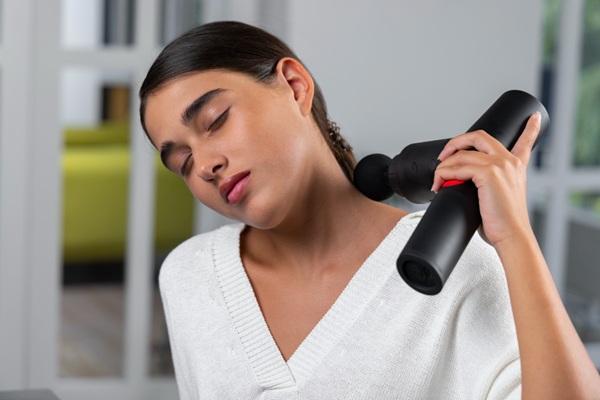
🪑 3. Chair-Back Stretch with Pressure
A great way to combine stretching with massage.
How to do it:
Sit on a chair and lean back slowly, allowing your upper back to drape over the top of the chair. Pause and breathe deeply, allowing gravity to gently stretch your back. For added pressure, press into the chair with your hands or place a small cushion behind your back.
Best for: Mid-back relief, spinal decompression
Tip: Choose a chair with a firm, rounded edge.
🧱 4. Foam Roller Massage (Lying Down)
Perfect for those who want a deep tissue experience.
How to do it:
Sit on the floor with a foam roller placed horizontally behind your lower back. Lean back onto the roller and use your legs to roll it slowly up and down your spine. Stop and hold the roller on any tight spots for 20–30 seconds.
Best for: Large muscle groups, general tension
Tip: Keep your neck supported and avoid arching your spine too much.
🧍 5. Wall-Lean Pressure Technique
This lets you control the pressure with your body weight.
How to do it:
Stand against a flat wall. Use your knuckles, thumbs, or a massage ball between your back and the wall. Lean into the pressure and move slowly up, down, or in circles. Hold on any tight areas for several breaths.
Best for: Lower and mid-back, stress points
Tip: Keep feet shoulder-width apart for balance.
🧴 6. Use a Massage Tool or Hook Cane
Self-massage tools can reach tricky areas with minimal effort.
How to do it:
Use a massage hook, back buddy, or trigger point cane to apply pressure to hard-to-reach spots. Hook it over your shoulder or around your side and press gently into tight muscles. Hold and release or use small circular motions.
Best for: Between shoulder blades, lower back
Tip: Start with light pressure to avoid bruising.
🌬️ 7. Hot Compress + Gentle Rubbing
Combine heat therapy with self-massage for deeper relief.
How to do it:
Apply a warm compress or heating pad to your back for 10–15 minutes. After the muscles are warmed up, use your hands or a soft cloth to rub in long, gentle strokes from top to bottom. You can use massage oil or lotion for a smoother glide.
Best for: Muscle stiffness, end-of-day relaxation
Tip: Avoid heat if inflammation or injury is present.
💡 General Tips for Self Back Massage
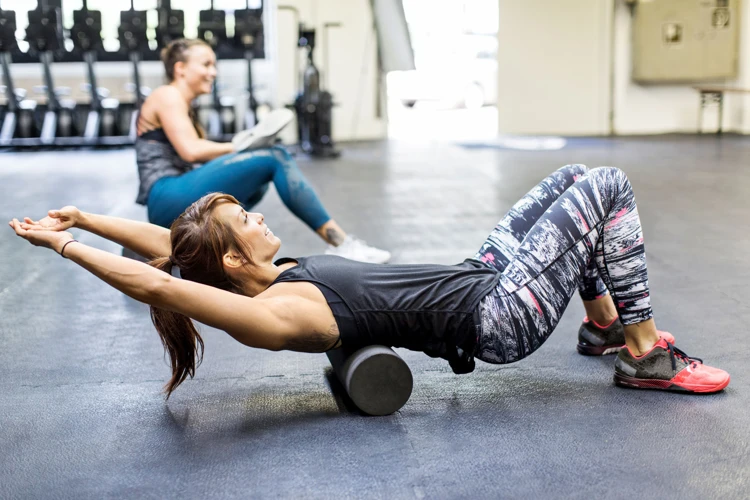
✔️ Stay Comfortable
Find a position that supports your back and allows you to reach the target area. Use a cushion or pillow for extra support if needed.
✔️ Start with Light Stretches
Before you begin massaging, warm up your back with gentle stretches. Try a simple cat-cow stretch or a seated forward fold to loosen tight muscles and improve circulation.
✔️ Use Gentle Pressure
Massage should feel soothing, not painful. Begin with light pressure and increase gradually if it feels good.
✔️ Massage in Circles
Use small circular motions to help release tension and encourage blood flow. This works well on the shoulders, upper back, and lower spine.
✔️ Stretch Between Sessions
Alternate massage with light stretching. Try a child’s pose or spinal twist to support flexibility and enhance the effects of your massage.
✔️ Be Consistent
A few minutes of massage and stretching, several times a week, can prevent stiffness and support long-term comfort.
✔️ Use Oil or Lotion
Reduce friction and help your hands or tools glide smoothly. Choose a massage oil with calming essential oils like lavender or eucalyptus if you prefer.
✔️ Focus on One Area at a Time
Don’t rush. Spend time on one spot—especially if it’s tense—before moving on.
✔️ Stop If It Hurts
Some soreness is okay, but sharp or lingering pain is not. Always listen to your body and ease up if needed.
These tips will help you get the most out of learning how to massage your own back safely and effectively.
⚠️ Safety Tips for Self Back Massage
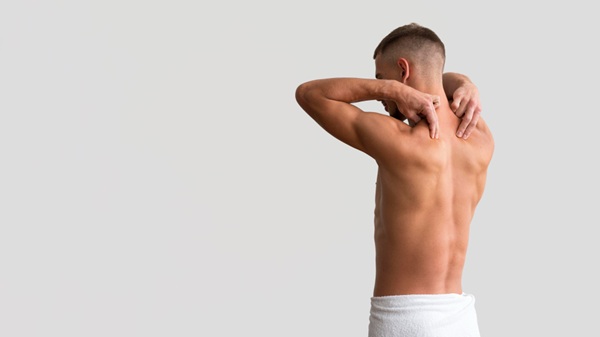
🔸Warm Up First
Cold muscles are more prone to strain. Do some light stretching—like shoulder rolls or gentle spinal twists—before massaging to loosen up.
🔸 Adjust Pressure to Comfort
Too much pressure can cause bruising or injury. Start light and increase gradually, staying within your comfort zone.
🔸 Avoid Injured or Inflamed Areas
Never massage over areas that are swollen, bruised, or severely painful. Doing so could worsen the condition.
🔸 Know the Contraindications
Massage may not be safe for certain conditions like blood clots, infections, fractures, or skin issues. If in doubt, consult your doctor.
🔸 Steer Clear of Risky Zones
Avoid pressing directly on the spine, neck vertebrae, or base of the skull. These areas are sensitive and should be treated with caution.
🔸 Respect Your Limits
Listen to your body. If a movement feels forced or painful, stop immediately and rest. Self-massage should never hurt.
🔸 Use the Right Tools Wisely
Massage tools like foam rollers and massage guns can be helpful—but only when used correctly. Follow instructions, and never force a tool into tender or bony areas.
🔸 Ask for Help if You’re Unsure
If you’re unsure about a technique, it’s best to consult a physical therapist or massage professional. They can guide you safely and effectively.
🧑⚕️ When to Seek Professional Help for Back Massage
While self-massage can be highly effective for everyday tension, there are times when professional support is the better choice. Knowing when to see a licensed massage therapist can prevent further injury and ensure you get the right treatment.
📌 When Pain Persists
If your back pain lasts more than a few days or keeps returning, it’s time to consult a professional. A massage therapist can assess the issue and provide targeted therapy tailored to your needs.
📌 When You Need Deeper Tissue Work
If your tools or techniques can’t reach the deeper layers of muscle, a professional can help. Therapists are trained to apply controlled, deep pressure safely.
📌 When You’re Recovering from Injury
Massaging an injury without proper knowledge can cause more harm than good. A professional therapist can work around or through the injury to promote healing without aggravating it.
📌 When Managing a Chronic Condition
Conditions like fibromyalgia, arthritis, or sciatica require specialized techniques. A massage therapist familiar with chronic pain can help manage symptoms more effectively.
📌 When You’re Pregnant
Prenatal massage must be done with care. Trained professionals can safely reduce pregnancy-related discomfort while avoiding pressure points that could be risky during pregnancy.
🎥 Need a visual guide?
Watch this helpful video on when to seek massage therapy support:
❓ Frequently Asked Questions About Self Back Massage
👐 What Kind of Massage Techniques Can I Use When Learning How to Massage Your Own Back?
There are several effective techniques you can use to massage your own back, even without a therapist. Try:
- Kneading: A gentle, rhythmic motion that helps relax muscles
- Tapping: Lightly tap your back using your fingertips to stimulate nerves
- Circular motions: Loosens knots and increases circulation
- Rubbing: A firmer motion to target tight muscles
Experiment to find what feels best for your body.
🔁 How Often Should I Massage My Back?
For general maintenance and tension relief, aim to massage your back at least once a week. If you’re physically active, sit for long hours, or experience chronic tension, you may benefit from daily self-massage. Listen to your body and adjust as needed.
🧰 What Kind of Equipment Do I Need for a Back Massage?
You don’t need much! Here are a few essentials:
- A comfortable place to sit or lie down (bed, mat, or couch)
- A towel or pillow for support
- Massage oil or cream for smoother strokes
- Tools like a tennis ball, foam roller, or massage gun
These help you reach tight areas and make the massage more effective.
⚠️ Are There Any Safety Precautions I Should Take?
Yes—always put safety first when massaging your own back. Follow these tips:
- Warm up with light stretching beforehand
- Avoid massaging injured, inflamed, or tender areas
- Use a stable surface and avoid awkward positions
- Test oils on a small area before use
- Start with light pressure and increase slowly
- Stop if you feel sharp or unusual pain
- Stay hydrated before and after massage
These steps help you avoid strain or injury and ensure a more beneficial session.
💆 What Are the Benefits of Giving Myself a Back Massage?
Self-back massage offers numerous physical and mental health benefits:
- Relieves stress and tension by releasing endorphins
- Improves circulation and reduces muscle fatigue
- Speeds muscle recovery by increasing blood flow and flushing lactic acid
- Reduces tension headaches by relaxing upper back and neck muscles
- Increases flexibility and range of motion
- Boosts mental wellness, helping reduce anxiety and low mood
Even just a few minutes of self-massage can make a noticeable difference in your well-being.
💡 Final Thoughts on Self Massaging Your Back
Massaging your own back is a simple and effective way to ease pain, release tension, and support overall well-being—no professional required. With the right techniques, a few tools, and a bit of consistency, you can experience the many benefits of back massage right from home.
Whether you’re targeting tight muscles after a long day or adding self-care into your weekly routine, remember to move gently, stay mindful of your body’s signals, and adjust pressure as needed. Over time, self-massage can help improve mobility, reduce stress, and make a noticeable difference in how you feel every day.
💡 Want to learn even more about how to massage your own back? Bookmark this guide and explore our related tools and techniques.
📚 References
⚠️ Disclaimer:
This article is for informational purposes only and does not constitute medical advice. Always consult with a licensed healthcare provider or certified massage therapist before beginning any new treatment, especially if you have pre-existing health conditions or concerns

